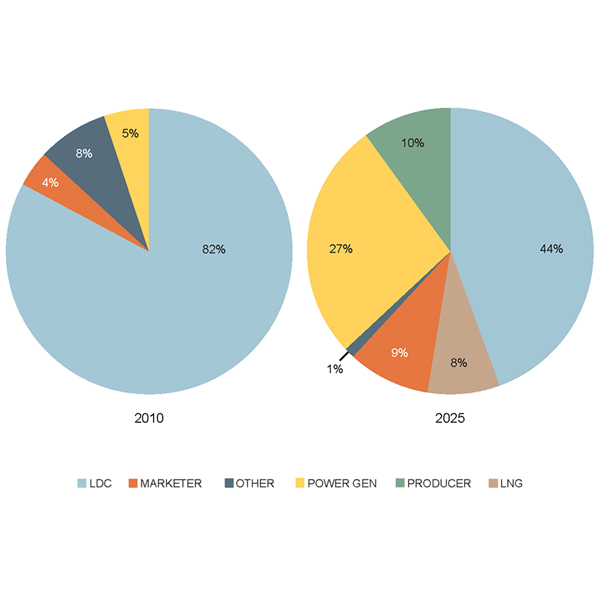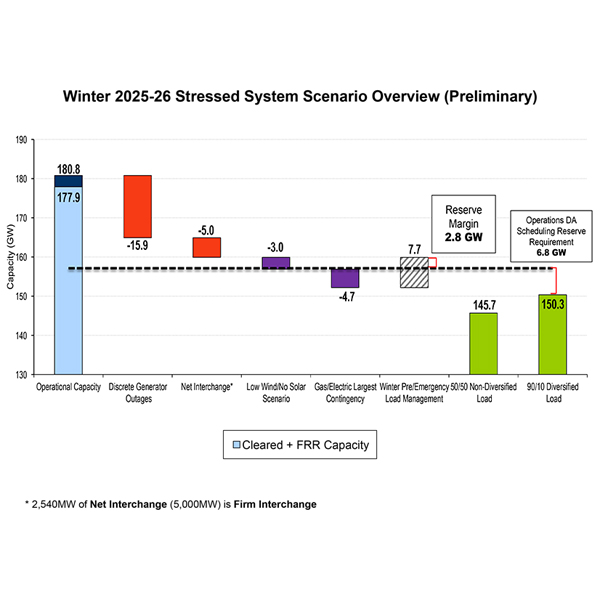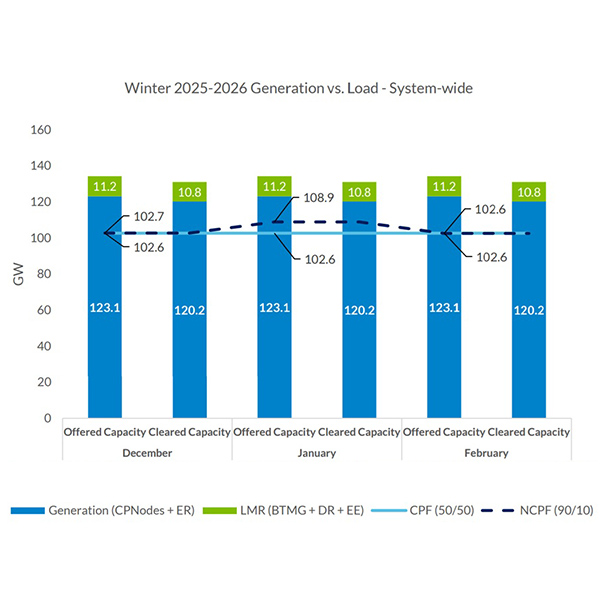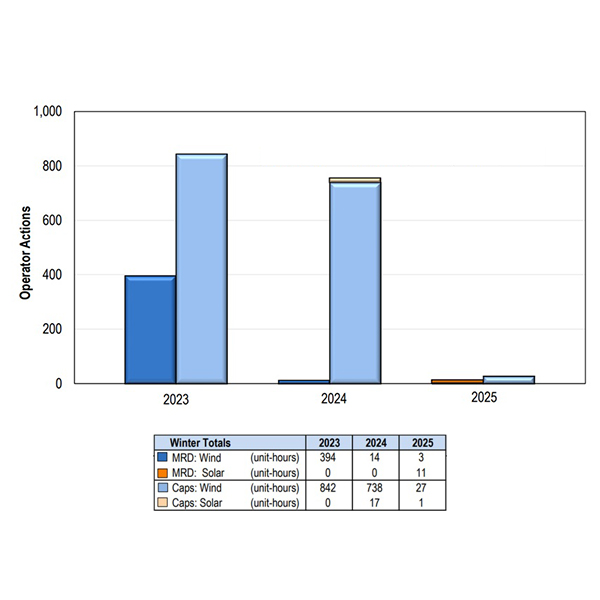winter peak
NYISO's Business Issues Committee and Operating Committee both endorsed tariff changes ahead of the completion of the Champlain Hudson Power Express.
The National Petroleum Council is the latest group urging reforms to address gas-electric coordination including pipeline expansion, and reforms to organized power markets and pipeline tariffs.
PJM’s winter outlook found the RTO should have enough resources to meet the forecast peak load of 145,700 MW, although the reserve margin continues to decline as new resource development lags.
MISO said even a 109-GW peak this winter shouldn’t prove problematic, though a more probable scenario would deliver a 103-GW peak in January.
After years of its Independent Market Monitor critiquing MISO for making too many out-of-market actions to tame congestion, the IMM congratulated the RTO for dramatically reducing such actions.
While NYISO operated reliably last winter, the season provided “continued examples of limited flexibility on the gas system,” ISO staff told the Operating Committee.
MISO emerged from winter 2024/25 without turning to emergency procedures despite wide-ranging winter storms Jan. 6-9 and again Jan. 20-22.
The MISO South region relied on transfers from the Midwest to handle a record, 33-GW winter peak during a late January winter storm.
ERCOT set a new peak for winter demand peak, with record production from batteries and near-record production from solar resources playing a key role.
PJM credited emergency procedures with improving generator performance during a pair of winter storms in January, including a new all-time winter peak of 145,060 MW.
Want more? Advanced Search










